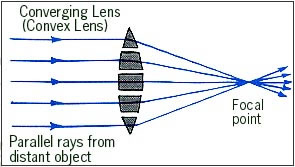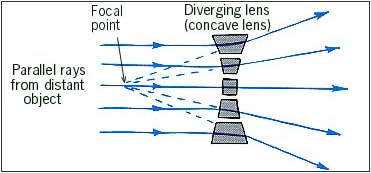
You are here: Home >> Encyclopedia of Light >> Lenses
A lens is a piece of glass or plastic, transparent. It is usually circular in shape and it is polished on both sides in order to magnify or diminish an object when light passes through it. It can be convex or concave (there are also combinations like plano-convex, plano-concave, biconvex, biconcaved and convexo-concave lenses).
What we exploit in lenses is the phenomenon of refraction. Light travels slowly inside a lens than the air and a lenses can actually steer light to the direction we want. The curvature of a lens can make different rays of a light beam refract through different angles. The angle of refraction varies and depends on the material we used to manufacture a lens. Materials which have high refractive indexes create low angles of refraction and visa versa. The previously steted phenomenon of refraction of rays reflected or emitted by an object forms the desired image of the object. This image may be magnified or diminished in our eyes.
 Lenses are widely used in eyeglasses, as contact lenses, magnifiers, signal lights etc. Combinations of lenses are the most important parts of telescopes, binoculars, microscopes and cameras.
Lenses are widely used in eyeglasses, as contact lenses, magnifiers, signal lights etc. Combinations of lenses are the most important parts of telescopes, binoculars, microscopes and cameras.
We can see the most important part of a lens now. The point where the rays converge or diverge the focal point (usually defined as "f") of the lens. A symmetrical lens has two focal points that lie in same distances from the center of it. What makes an object appear magnified or diminished is the focal length (usually defined as "fl"), which is the distance between the centre of a lens and the object. The peprendicular line which passes through the center of the lens is its axis.
How lenses work at the Laboratory of Light
A bi-convex lens makes parallel rays of light converge to the focal point of it. A bi-concave lens makes parallel rays of light diverge from it. If we could elongate the diverged rays, we could see them converge to the focal point of the lens.